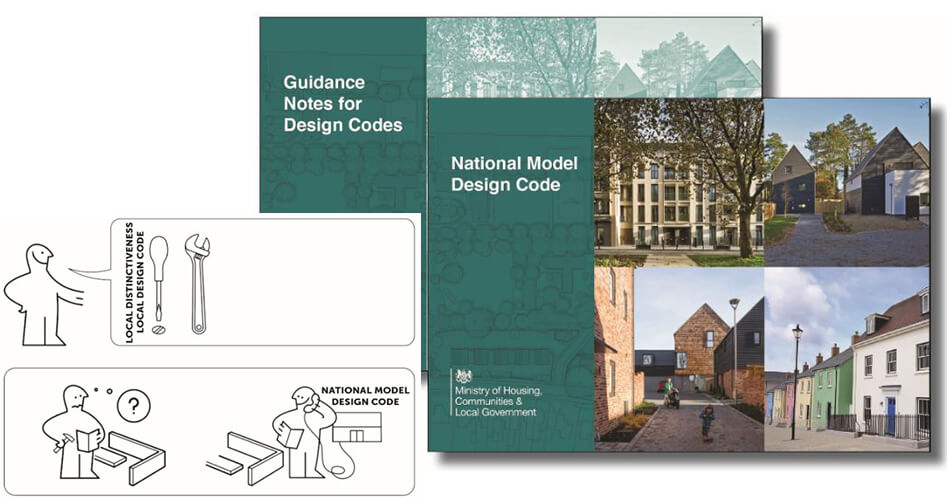The National Model Design Code is not a Design Code
The long awaited National Model Design Code (NMDC) has finally arrived in its draft form but the NMDC is not a Design Code by itself. No doubt a significant step forward, the NMDC is a comprehensive step by step toolkit and provides detailed guidance to Local Authorities to assist them on the production of local design guides, codes and policies to promote good design and beautiful places. It also states for privately owned large allocated sites, landowners and developers may wish to write their own Code with assistance from the respective LPA/s.

The NMDC is also accompanied by the Guidance notes document. The Government is also welcoming expressions of interest from 10 local planning authorities in England to take part in the testing of the NMDC where funding is available to help them test aspects of the process and content of the document and to inform its further development and application.
-
What’s in the NMDC? The NMDC will act as an universal benchmark or guide to shape local level Codes and guides. How will it work? - The NMDC has a checklist based on the 10 characteristics of the NDG. Overall there can be 64 total criteria under 10 headings where Local codes will set out requirements or guidance of how beautiful and sustainable design principles can be achieved around those criteria in their local context. New developments will need to adhere to most or all of these 64 criteria and demonstrate how a beautiful place could be created.
-
Local Coding Process and how long will it take? - LPAs will be expected to follow 3 Phases made of 7 mini steps - Analysis, Vision and Code as part of this journey. Consultation will play an intricate role for each phase and local groups who want to engage will be able to shape their local area code or guide. The expression of interest sets out a testing programme of 6 months for a Local Planning Authority to produce their Local Design Code with milestones of public consultation and workshops at eight weeks and three months.
-
What to look out for - To me, the key message sent through the publication of the new National Model Design Code is the shift to ‘Appearance’ in the placemaking debate. ‘Beauty’ is the key mantra. The stages outlined in the Coding process of the NMDC puts communities at the heart, should they wish to positively engage. What we need to assess in the next few years is whether the opportunity that has been provided to local communities is seized by all strands of the society including the vocal groups to the remainder silent crowds to collectively create a positive impact and realise the aims of the build-back-better initiative. For more details, please read my overview here.
-
Un-answered questions - Fundamentally the three big areas where I am unsure how the NMDC will ‘work’ are around Innovation, Craftsmanship and Resources. As Architects and Urban Designers, our main aim is to create a context responsive design vision and let mechanisms and tools such as Codes regulate and deliver that vision over time allowing flexibility and innovation. Will the tick-box approach of the NMDC address that fundamental fact of the creative process that ‘building beautiful’ is about variety, richness and creating layers in the spatial and built fabric over time? Regulation is good but excessive regulation can be unhealthy and detrimental in this process. Even if a new development is compliant with Local Codes, approved in outline and in detail, what regulates the quality of build which is appalling across certain parts of the country? Having multiple Codes and visual documents written under new regimes do not solve the issues around poor build quality. And lastly the big one - where is the money? There has been questions raised time and time again around skills, ability, lack of resources and the need for more funding for local authorities to carry out this work. Helping only 10 of those LPAs out across England is not enough.
If the three areas can be considered and resolved, no doubt the finalised NMDC will become prominent in decision making and we look forward to advocating its use, working with our clients and local authorities and applying the principles to shape and create beautiful developments.
